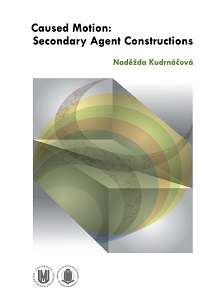Caused Motion: Secondary Agent Constructions
Caused Motion: Secondary Agent Constructions
Author(s): Naděžda Kudrnáčová
Subject(s): Language and Literature Studies, Theoretical Linguistics, Syntax, Lexis, Semantics, Pragmatics, Phraseology
Published by: Masarykova univerzita nakladatelství
Keywords: Semantico-Syntactic Status of Secondary Agent Constructions; Applicability of Verbs; Causal Structuration; Non-Coercive and Corective SA Constructions;
Summary/Abstract: Secondary agent constructions (SA constructions) represent verb-class specific constructions (in the sense of Croft 2003). The reasons are as follows: (a) SA constructions include a narrowly defined set of verbs and (b) the resulting meaning is derived from the interaction between the meaning of the verbs and the meaning of the construction, involving a very specific causal structuration (as regards the form of SA constructions, directional phrases can be missing, depending on the type of scenario). Heavy restrictions imposed on the repertory of verbs that are admitted into these constructions have been explained in the literature by the inherently monadic, non-causative nature of these verbs. It has often been claimed in the relevant literature that manner of motion is not syntactically relevant. However, owing to the apparent restrictions imposed on the syntactic applicability of self-agentive manner of motion verbs (including their usability in SA constructions), it is evident that the claim cannot be maintained. Boas (2006, 2008) has shown convincingly that there are connections between the verb’s descriptivity (roughly, the complexity and specificity of the verb´s meaning) and the range of syntactic patterns into which the verb may enter. Nevertheless, his account does not make clear exactly which elements of the verb´s meaning decide the verb’s usability in SA constructions (and in some other types of syntactic patterns).
- E-ISBN-13: 978-80-210-7633-4
- Page Count: 150
- Publication Year: 2013
- Language: English
- eBook-PDF
- Sample-PDF
- Table of Content
- Introduction

